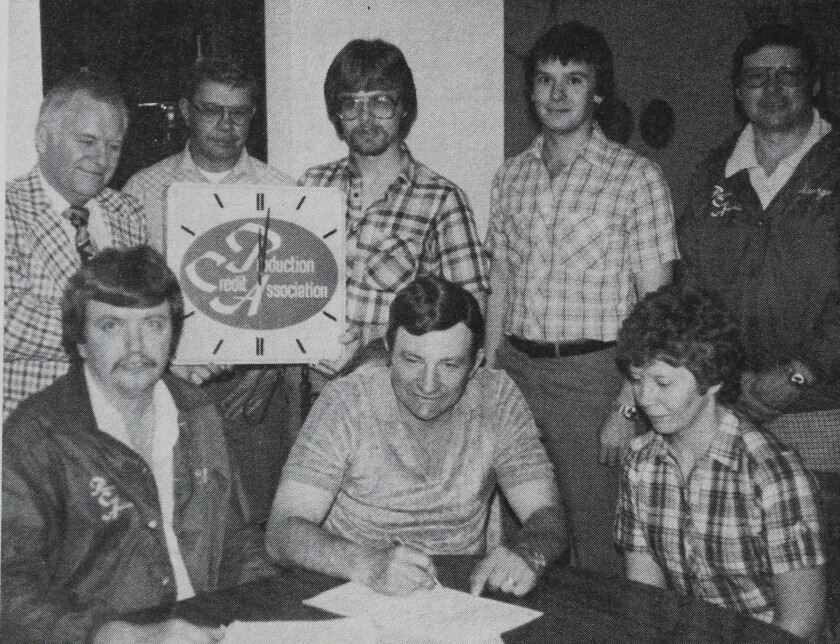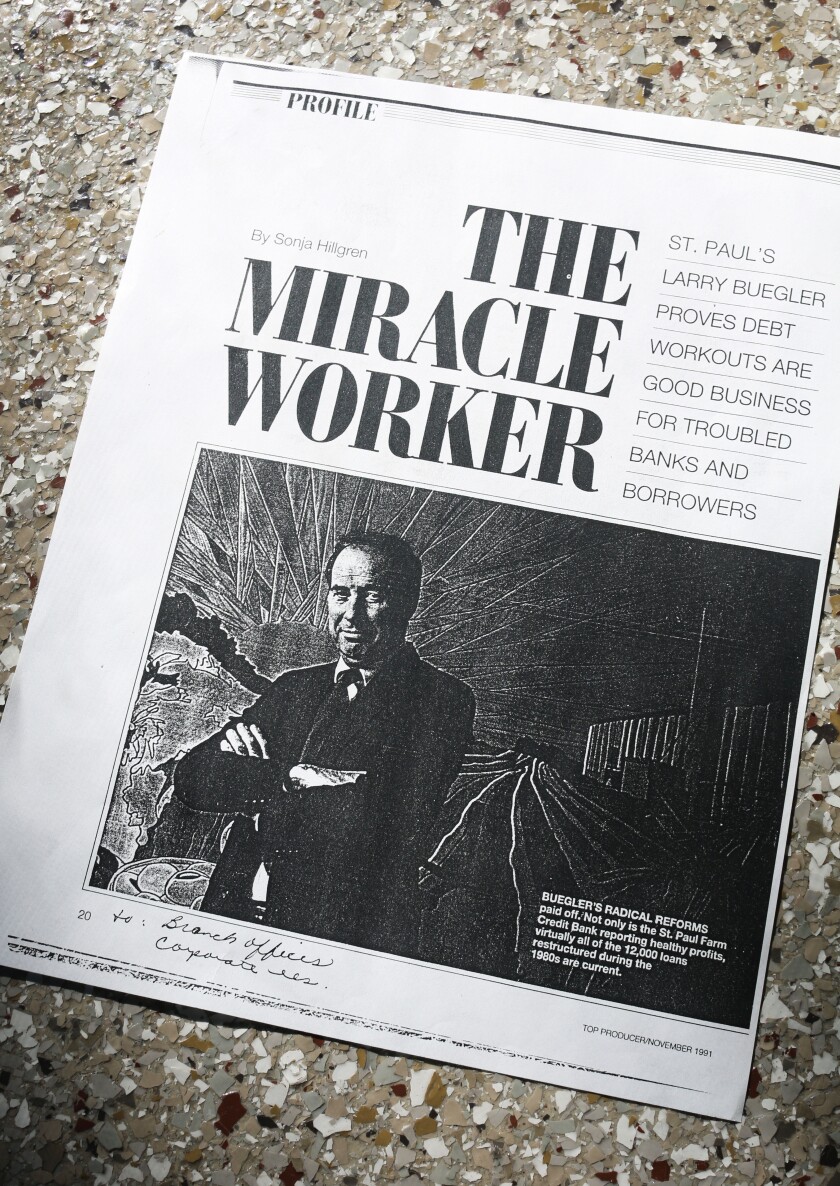FARGO — Ken Knudsen would just as soon forget the farm stress of the 1980s, but he hopes today’s ag lenders remember its lessons.
Knudsen, 63, had a front seat to the farm credit crisis of the 1980s, when one in four farms failed because of economic losses. He says that today he isn’t seeing the restructuring and a shake-out of farm numbers in the Upper Midwest that he did back then. Knudsen retired a year ago as senior vice president of credit at AgCountry Farm Credit Services, based in Fargo.
“At the peak of the tough times, in 1987, about half of our volume was labeled ‘adverse,’ meaning not meeting typical credit standards,” he says. “That compares to about 4% today.”
Big difference
A bit of background: The Fargo-based co-op was under the St. Paul Bank for Cooperatives, chartered in 1933 and a member of the Farm Credit System — all regulated by the federal Farm Credit Administration.
The St. Paul Bank was one of 12 district banks. The banks made equipment and operating loans through Production Credit Associations.
Knudsen in 1980 moved to a PCA post in Fargo and in 1981 moved into a tumultuous career in credit management.
The ‘wild stuff’
As Knudsen’s credit responsibilities grew, farmers had suffered five years of losses. Interest rates skyrocketed from about 7% to a high of 20% per year. That year, Fargo PCA started a special credit department to work with the increasing volume of troubled loans to farmers.
From 1982 to 1984, what Knudsen describes as the “wild stuff” hit. There was the tax-protesting group known as Posse Comitatus with farmer Gordon Kahl, and a famous shootout with U.S. marshals at Medina, N.D., in February 1983. There were advocate groups like the Farmers Legal Assistance Project that manipulated “no-sale” auctions, where people refused to bid so no money would go back to the lender that was seen as forcing the liquidation. There were tractorcades to draw attention to the plight of farmers.
ADVERTISEMENT
Farm auction sales started out as “mostly voluntary” from 1981 to 1985, but some turned ugly.
”Loan officers at times got death threats. Some lenders placed plain-clothed guards in their offices,” Knudsen says.
By 1985, after years of losses and rising interest rates, land values started to fall for the first time since the 1930s. This hit the Federal Land Banks, which, in many areas, had about 75% market share in land loans.
Knudsen helped the system innovate.
In 1982, Knudsen and the Fargo PCA made history when it staged the first PCA agricultural equipment lease to farmers Gary and Betty Osborn of Fairmount, N.D.

ADVERTISEMENT
The Osborns obtained the Steiger tractor at an annual interest rate of 10.1%, compared to a conventional loan of 15.8% at the time.
At the time, Knudsen made a point of saying the lease is “a financing tool, not as a last resort for those who can’t qualify for a loan.”
But farmers continued to go under, suffering from the weight of high-interest loans, poor prices and, for many, unusually dry weather.
Nationally, the Farm Credit System did not have enough reserves to cover the anticipated losses. The system needed to request a loan from Congress to stay in business but needed to show that it had a plan to survive and repay the loan.
In Fargo, Knudsen helped develop a group of strategies that could significantly reduce the loan losses and return the system to viability. “If it was less of a loan loss to restructure the interest rate — or sometimes the debt — to obtain more collateral to reduce the loan losses and buy some time for things to turn around, we would do so,” Knudsen said.
Larry Buegler, the new president of the St. Paul Farm Credit Bank, presented these workout plans to Congress. Congress passed a $4 billion line of credit as part of the Farm Credit Act of 1987 (actually passed in 1988). Because of the success of these strategies, FCS only used $1.2 billion of the credit line and paid it all back with interest.
Eventually, interest rates came down, and crop prices and yields went up.
ADVERTISEMENT
Knudsen remembers things improving in 1993 as the region entered a wet phase and more farmers shifted from cereal crops to higher-value row crops like soybeans and corn. Land values rose fairly quickly.

More options
Today, Knudsen estimates that many full-time farms have more than 2,000 acres in the Red River Valley. Landowners who bought more land have more control and don’t have to negotiate cash rents and ward off other interested renters every year, Knudsen says.
More owned land means more options. If necessary, farmers are able to sell some land, pay off or pay down debt and improve their cash flow and buy more time. “You see a lot of adjusting going on today — not seeing any debt forgiveness,” he says.
Many farmers still are breaking even or making a little money. Seed, fertilizer, chemical and rent is expensive, but interest rates are low.
“There’s always options,” Knudsen says, if problems are addressed in a timely manner.
ADVERTISEMENT
“That’s why you don’t see many foreclosures and bankruptcies today, yet, and I hope we don’t,” he says. More equity and collateral provide more options and time, but it’s “all about cash flow.”
“I hope the people in charge of credit training in the ag lending shops went through the 1980s,” he says. “When you start to see stress, you start dealing with it right away — way before there’s significant trouble.”








